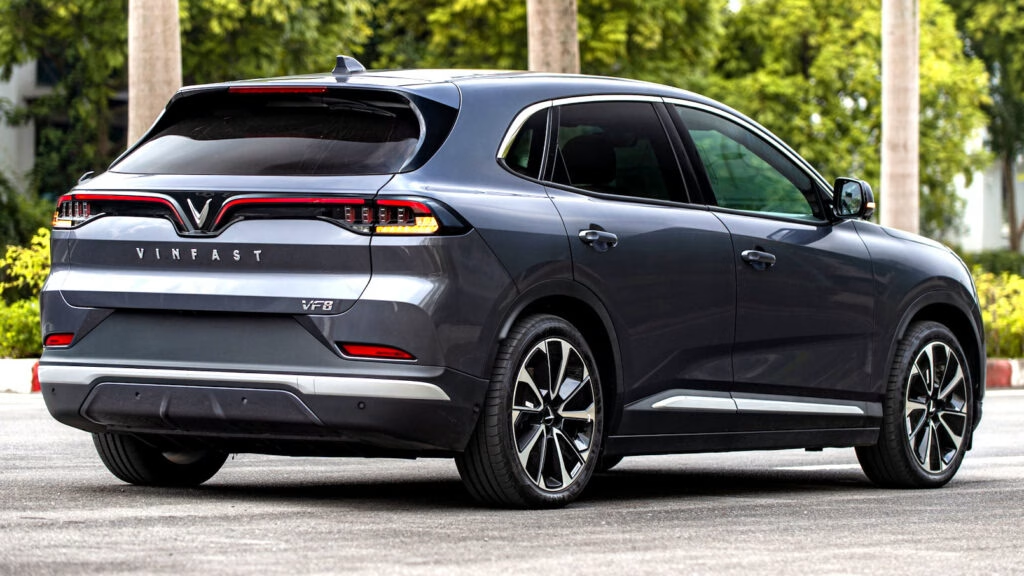Why Are Vinfast VF 8 Owners Worried About Lane Assist?
Imagine cruising down the highway in your new electric SUV, only to feel the steering wheel suddenly jerk—hard. That’s the unsettling reality some Vinfast VF 8 owners have faced. In 2024, the Office of Defects Investigation (ODI) received 14 complaints about the VF 8’s Lane Keeping Assist (LKA) system behaving erratically. Drivers described the car veering toward walls, drifting out of lanes, and even resisting their attempts to regain control. One owner recounted nearly hitting a concrete barrier—more than once. That’s enough to make anyone’s palms sweat.
What Exactly Went Wrong With the Lane Keeping Assist?
The heart of the issue is how the VF 8’s LKA system interprets and reacts to road conditions, especially on wide or sweeping turns. Instead of gently nudging the car back into its lane, the system sometimes applies such forceful corrections that drivers have to fight the wheel just to stay safe. According to Vinfast, this comes down to how the torque ratios were tuned in the car’s advanced driver-assistance system (ADAS). In plain English: the software was a little too eager, and not quite smart enough, about when and how to help.
No crashes have been officially linked to the problem so far, but regulators weren’t willing to wait for one. After reviewing the complaints and conducting their own investigation, the ODI concluded that the system could require “high control effort” from drivers—raising the risk of a crash, especially if someone panics or overcorrects.
How Did the Recall Unfold?
When a new automaker enters the US market, every move is under the microscope. For Vinfast, the scrutiny turned into a full-blown recall. Regulators ordered the company to fix all 6,314 VF 8s sold in the US. That’s every single one on American roads. The recall is a big deal—not just for the brand’s reputation, but for the owners who trusted their cars to keep them safe.
The timeline moved quickly. After the ODI’s probe in September 2024, Vinfast announced a free software update to address the LKA issue. The fix is set to roll out starting October 31, 2025, with owner notifications going out just a few days prior. The update promises to reduce steering vibration, make it easier for drivers to override the system, and smooth out the transition when handing control back to the human behind the wheel.
What Do Owners Say About Their Experiences?
If you want to understand why this recall matters, just listen to the people behind the wheel. One driver described the LKA system yanking the steering wheel so aggressively that it nearly slammed them into a wall—an experience they say happened about 30 times. Another said the system constantly tugged toward the center of the lane, refused to turn off, and left them genuinely afraid to drive the car.
These aren’t isolated gripes. When owners start to fear their own vehicles, it’s a sign that something fundamental needs fixing. The National Highway Traffic Safety Administration (NHTSA) takes these stories seriously, and so should any automaker hoping to win over American drivers.
How Common Are Lane Assist Recalls in the Industry?
Vinfast isn’t alone in facing technology hiccups. As more vehicles roll out with advanced driver-assistance features, recalls have become more common across the industry. According to a 2023 report from the Insurance Institute for Highway Safety (IIHS), nearly 40% of new vehicles in the US now offer some form of lane-keeping or lane-centering assist. With that rapid adoption comes growing pains—software bugs, sensor glitches, and, yes, recalls.
Other major automakers have faced similar issues. For example, in 2023, a leading brand recalled over 50,000 vehicles due to lane assist malfunctions that could cause unintended steering corrections. The lesson? Even the biggest names are still ironing out the kinks in these complex systems.
What’s the Fix—and Will It Work?
Vinfast’s solution is a software update, which is becoming the go-to fix for many modern car problems. The company says the update will tone down the steering corrections, make it easier for drivers to override the system, and slow the handoff from automation back to the driver. That should mean fewer surprises and a more predictable driving experience.
Software updates can be a double-edged sword. On the plus side, they’re quick, convenient, and don’t require a trip to the mechanic. But they also rely on owners actually installing them—and on the update doing what it promises. The real test will come after October 31, when drivers start to see (and feel) the difference.
What Should VF 8 Owners Do Now?
If you own a Vinfast VF 8, keep an eye on your mailbox and email for the official recall notice. When the update becomes available, schedule it as soon as possible. In the meantime, be extra cautious when using Lane Keeping Assist, especially on wide curves or unfamiliar roads. If you experience any odd steering behavior, report it to the NHTSA—your feedback can help regulators and automakers catch issues faster.
For those considering a VF 8 or any car with advanced driver-assistance features, ask questions about how the system works, what safeguards are in place, and how updates are delivered. A little homework can go a long way toward peace of mind.
What Does This Mean for Vinfast’s Future in the US?
Launching a new car brand in America is tough. Doing it with a recall hanging over your head? Even tougher. Vinfast’s quick response and willingness to own the problem are good signs, but rebuilding trust takes time. American drivers have high expectations for safety and reliability, especially from new players in the EV market.
Still, recalls aren’t the end of the road. Many established automakers have weathered similar storms and come out stronger. The key is transparency, fast fixes, and a genuine commitment to customer safety.
The big takeaway? Getting driver-assist tech right isn’t about perfection—it’s about smarter adjustments. Start with one change this week, and you’ll likely spot the difference by month’s end.

